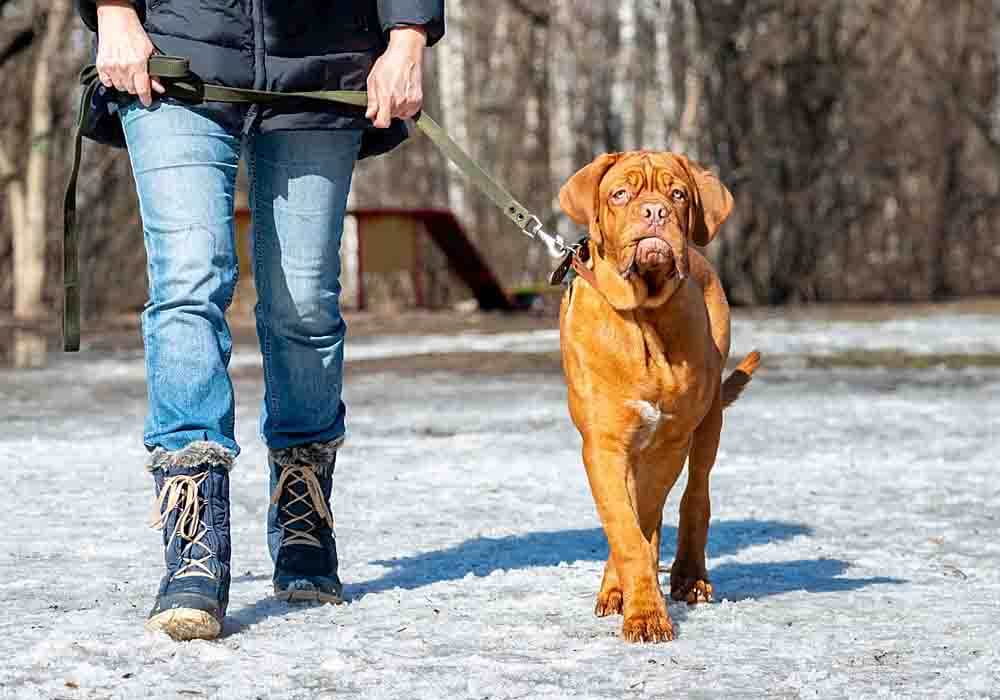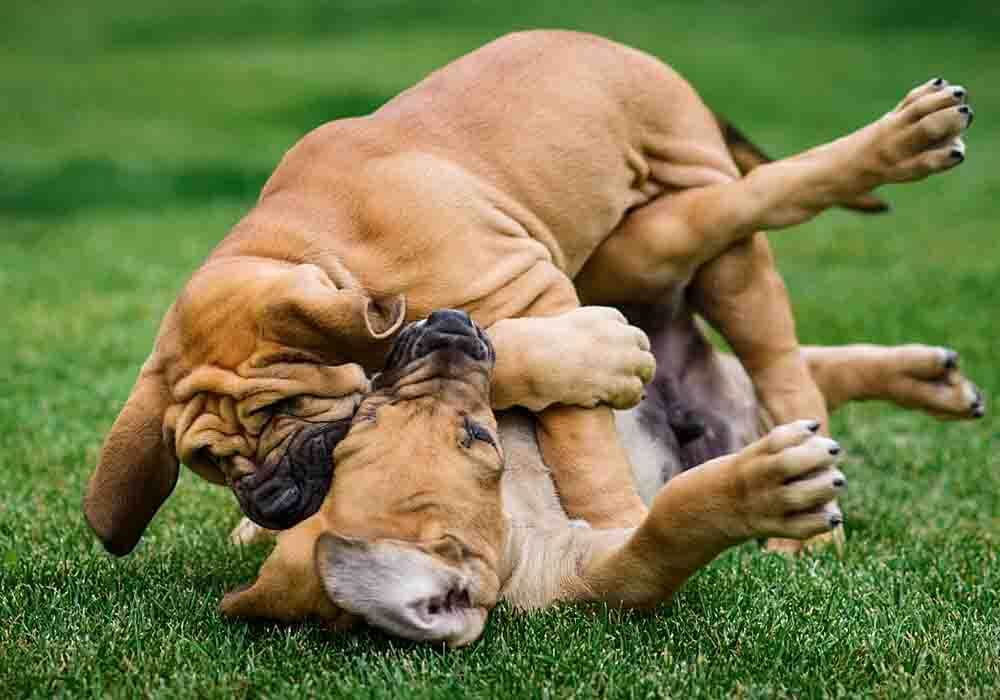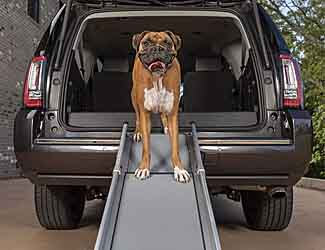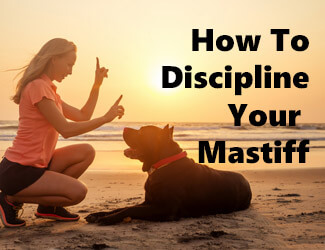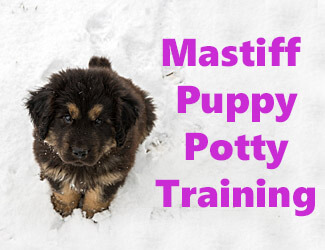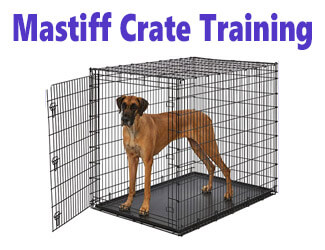How To Crate Train A Mastiff Puppy
Using One Of These Top 3 Methods
by Ken Alden
The day you bring home your Mastiff puppy, all you will want to do is cuddle and play. But you will also want to begin the important process of instilling positive behaviors like crate training.
How To Crate Train A Mastiff Puppy...Starter Tips
1. Set Up the Crate
2. Let Your Puppy Explore The Crate
3. Reward With Treats Once They Go Inside
4. Start Giving Some Meals Inside The Crate
5. Slowly Extend Crate Time After Meals
6. Leave The House
First and foremost, you should understand that this will not be something that happens overnight. It requires consistency, patience, and trust between you and your new pup.
These are the top 3 methods used for crate training:
· Food Association: Treat rewards to entice, meals in the crate later
· Quiet Time: Crate downtime after playtime makes a crate seem like home
· Game Method: Learn to turn crate time into a game your dog will love
We’ll cover these easy steps for each of these 3 methods as well as choosing the right crate and what you'll need to get going with your training...Read on below!
Pro-tip: Ever try lifting a Mastiff? Their weight can hurt not only your back but their joints when they hop down from cars, sofas or even your bed. To protect your back and theirs check out the best Mastiff ramps on Amazon.com now.
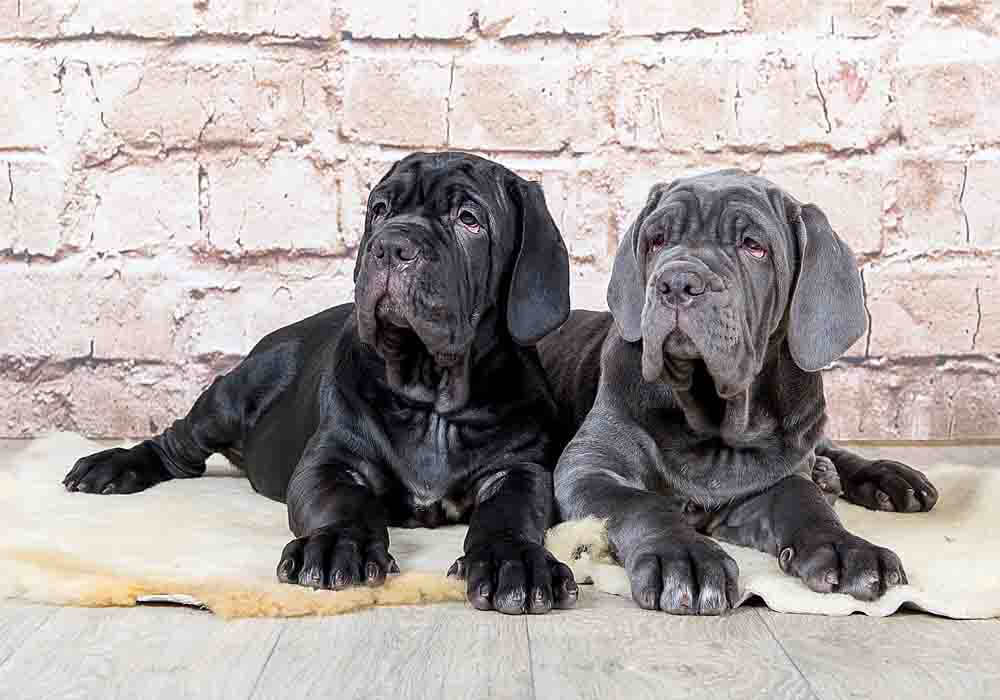
Why Crate Training is Important
Before beginning the process of training your Mastiff puppy, you want to know what you’re up against. You also should understand the benefits of crate training and why it can be beneficial to you, your puppy, and your home.
When your Mastiff is 3 months old, beaming with wild puppy energy, but already weighs 50 pounds, you will appreciate having them crate trained. So will your furniture.
By crate training your Mastiff, you are giving them their own space to call home, within their home. There is a level of security and safety that they will feel in here. So while you get to keep your house in order, your puppy gets to have a feeling of comfort and familiarity while you are gone.
Crate training them at home will also be helpful when you take them on car rides, so they will feel safe and relaxed. Even if they don't know where they are going, or what is going on, they will know that they are safe in their space. It also gives you peace of mind if there is an accident or a sudden stop. They will be safe and secure in their crate.
Preparing for Crate Training
No matter the method you choose to use, you will need to prepare accordingly. Having the supplies that you will need ready will make for an easier transition after you bring your furry family member home.
Of course, all the materials in the world won’t make a difference if you don’t have a plan for what you will do. how to crate train a mastiff puppy
What Size Dog Crate For A Mastiff Puppy?
Mastiffs aren’t exactly the easiest animal to shop for. If you think baby clothes don’t last long, try buying something for an animal that can be close to 200 pounds by the time they are a one-year-old!
If you buy a smaller crate, not suited for large dogs, you will need to replace it once, if not twice. If you don’t mind purchasing new crates every few months, then that’s fine. But you will wind up with several small crates sitting around housing dust bunnies.
This is why purchasing a large crate will end up making more sense in the long run.
Consider Doing This: Buy a crate divider. If you buy the proper size crate you will need once your little pup becomes a gentle giant, you can also purchase a divider to make the crate smaller for them until they grow into it. A crate that is way too big for the puppy will diminish the purpose of it and can become dangerous for travel purposes.
Pro-tip: Mastiff anxiety, aggression, destructive chewing, jumping up, fearfulness, and other behaviors can be controlled with the right training program.
Here’s a great course that
addresses these issues along with many other dog training basics: Check it out now!
Selecting the Type of Crate
Once you decide on the size, you also need to consider the different types of crates and what their purposes are.
Wire Crate: Wire crates will be the best option for your home. They are safe and secure but allow the dog to see 360 degrees around them. If they are in a crate that has less visibility, it can cause anxiety and uncertainty.
Hard-shell or Plastic Crate: These crates tend to work better for travel. If you have crate trained your Mastiff puppy with a wire crate, but prefer the hard-shell for travel, you can repeat the same steps, so they know that the hard-shell one is also a safe space for them. Typically, once they are trained with one crate, they will be fine with going into the other one. But it is good to get them used to that space as well.
Getting Started...
After picking the crate size and type that will best fit your puppy’s needs, you will want to be fully stocked on everything else you will need for training.
- Comfy bedding: If you expect your little pup to wander into a cold, hard, metal box without some sort of comfortable, inviting bedding, I wish you luck in getting him in there. You’ll need it. Find bedding that is plush and comfortable and that your pal can grow into. But don’t pick anything feather-based or a frilly fabric. Either one just yells, “Rip me apart!” to a young Mastiff (and an older one also).
- Treats: Whether you use the food method or not, having treats around during any type of training will always be beneficial.
- Favorite Toys: If your pup already has a few favorite toys picked out, make sure you have them nearby for training. Or if this is a new pup, go pick some out and let your Mastiff play with them and get his/her scent on them before training begins. Here's some of our Mastiff's favorites.
The Food Association
Method
This has become a popular method for many different skills when you train your dog. Let’s be honest--it can be a training technique for humans too. Food = motivation. When you use this method, it is more than a dog being excited to see their favorite treat or smell their favorite flavor of food. When that happens, the dog’s brain chemistry has been paired with its primal instinct to eat!
A dog's brain contains circuits that encourage hunting behavior along with circuits that evoke the response of fear. By presenting food to your pup, you are essentially activating the ‘hunting circuits, which turns off the fear.
This is one of the main reasons that
food association works so well when training a Mastiff. This can be especially true
when it is training that is scent-based. Mastiffs are primal animals that rely
on instinct heavily, so this can be a promising method.
With these simple steps, you will be able to
execute the food association training method easily: how to crate train a mastiff puppy
1. Set Up the Crate
You
will need to set the crate up in an area where you and your family spend the
most time. This needs to be a comfortable space where your puppy will feel safe
and understand they are among family and can relax.
Place
comfortable bedding inside the crate and make it as cozy and inviting as you
can. Items with your puppy’s scent will be especially good for this. Lastly,
you will need to make sure the door is tied open so it cannot accidentally be
shut.
2. Let Your Puppy Explore The Crate
Let your puppy into the room and encourage exploration. When they near the crate, use lots of positive reinforcement and give them a treat. Leave a couple of treats around the crate, especially around the door.
As your puppy starts to become more acclimated and gets closer and closer, you can begin leading the treats into the crate. Gradually toss them further and further inside.
3. Reward With Treats Once They Go Inside
The first time they enter the inside of the crate, you should respond with lots of positive reinforcement. Go ahead and give your puppy a few treats. This is a great time to not be shy about the 'baby voice' you have reserved especially for your fur baby.
Once they go inside for the first time, reward them with treats for entering the crate. You can still give positive reinforcement when they are near it, so they feel comfortable and they like the reaction from you that they will begin to associate with it.
4. Start Giving Some Meals Inside The Crate
After you decide they are fully comfortable going in and out of the crate, you can begin serving full meals in there. Once they are fully inside the crate, slowly close the door but don’t lock it, and let them eat their meal.
5. Slowly Extend Crate Time After Meals
After they are used to eating a few of their meals in there, you can start keeping them in there for a few minutes afterward. Be nearby and give positive reinforcement so that they know it is not a punishment. Rather, they are being celebrated for being so good.
Build up how long you keep your puppy in the crate. If they begin to whine, wait until they have stopped and then let them out and welcome them with positivity.
6. Leave The House
It is important to start small. Begin timing how long you are keeping them in there while you are around. Let’s say they seem to be good for about 20 minutes in there before getting antsy. Go ahead and leave the house for 20 minutes. When you return, you need to give them a treat right away and take them for a walk.
You will continue this process of leaving them for a little longer and longer, and whenever you get back, you will give them a treat and take them for a walk.
Pro-tip: Mastiff's (and their owners) love dog crates…and for good reasons. Crates keep dogs from mischief while you're away, are perfect for house training, for traveling by car, and provide the dog a place to de-stress. Check out the best Mastiff crates on Amazon.com now.
The Quiet Time Method
This is a great method for pups that love a good snooze after a good playtime. The name rings true to its actual purpose. After your Mastiff puppy has played his/her little heart out, they will appreciate some downtime. Mastiff puppies love their downtime. We forget sometimes, because of their size, that they aren’t the most active dogs in the world.
This method is meant to bring a calming sense to your Mastiff puppy as they enter the crate, so they associate it with warmth, naps, and comfort.
1. Introduce The Crate In A Calming Way
Set
up the crate in the center of a quiet and calming room. A den or area of the
house where you like to read or relax is perfect. Add comfortable bedding and toss in a comfy toy that your pup likes
to snuggle up with.
2. Bring The Puppy In And Slowly
Encourage Them
Directly
after a walk or playtime, bring the puppy into the room and introduce them to
the crate. Get down on the floor with them and use soothing, friendly tones to
encourage them to come to hang out by the crate with you. Allow them to sniff
and explore and stay close by.
3. Entice Them Inside
If
they go in on their own, that’s great! Give them lots of love and positivity
after they do. But if they need a little nudge, toss a toy or their favorite
bone inside and encourage them to check it out. Once they go in, keep the door
open. You don’t want them getting spooked right after checking this new space
out.
4. Make This A Routine
After
every playtime, walk, or any type of exercise, bring them back to the crate and
continue encouraging them to enjoy time in the crate.
5. Start To Close The Door
Once
they seem like they are acclimating to the crate, you can begin closing the
door after they go in. This is meant to be a calm, quiet time after playtime.
So after you close the door, go ahead and lay or sit next to the crate while
they are in there with the door closed. If their human is by their side, they
will be proud and content.
After they get used to that, you can begin trying it for longer amounts of time. Begin walking away during some of those times as well. Don’t rush this--let your pup decide this pace. how to crate train a mastiff puppy
6. Leave The House
Start
leaving the house for around 15 minutes at a time. Continue the routine of
playtime (making sure they have used the bathroom during this walk or playtime
as well) and then quiet time in the crate. Increase the time as you see fit for
your pup’s comfort level. How to crate train a mastiff puppy
The Game Method
If your pup decides that every move you make or everything you grab means there is a game afoot – you will want to check out this method. This is a method for the playful pups that love to please you, stimulate their minds with playtime, and be congratulated for winning.
The purpose of this method is turning the crate time into a game.
It gives them a feeling of accomplishment—they won the game and pleased
you. Let them think they won. How to crate train a mastiff puppy
Mastiffs are fiercely loyal dogs and would go to the ends of the
earth for you. But if you don’t happen to be traveling to the end of the earth
today, they will happily accept the chance to please you by playing and winning
a game to impress you.
1. Prepare the Crate
Set
up the crate in a family room or area that you are frequently in. Have comfy
bedding, pads, or blankets in the crate to make it cozy.
2. Play Around the Crate
Have
the door of the crate open and play with your puppy in the vicinity of the
crate. Use toys, treats, and your positive reinforcement to play in circles
around the crate. When they get close to the crate or show interest in it, show
lots of love and congratulations.
3. Turn it Into a Game
Now
that they are comfortable playing around the crate, begin making games out of
going in. Toss toys in there and reward them for retrieving them. Hide and seek
is another great game with their treats or toys. Hide them under the bedding or
in the back of the crate and let them discover them.
4. Start Closing the Door
While
they search and play, go ahead and close the door for short periods. Slowly
extend that time but don't push too hard.
5. Leave the Room
After
they begin seeming more comfortable with the door closed, start leaving the
room for short periods. Start very small – a few seconds, small. And even make
that a game when you peek back around the corner, which will excite them. Then
slowly leave the room for longer periods. How to crate train a mastiff puppy
6. Leave the House
After
they are comfortable with you being out of the room for 15 minutes, start leaving
the house for 10-15 minutes at a time. As soon as you get back to congratulate
them and take them outside to use the bathroom and continue your positive
reinforcement. Continue this until you can reach longer periods.
How To Crate Train A Mastiff Puppy...Final Thoughts
All these methods have proven successful, but the best one for you will be up to you and your pup. Mastiffs are loyal, dependable, and highly instinctual. So, there are reasons within every method that make sense specifically for the personality traits of Mastiffs.
All methods have these things in common:
- Always give lots of positive reinforcement
- Don’t push them too hard too soon, let them ease into it
- Pay attention to your dog and how they react throughout the process and let them lead you
Return to the top of this How To Crate Train A Mastiff Puppy page

About the Author...
Ken Alden, a dedicated Mastiff owner for over eight years, is acclaimed for his expertise in care, grooming, and training. Read more About Me and my dog Shadow.
- Mastiff Guide Home ›
- Mastiff Training ›
- Crate Train Mastiff Puppy
